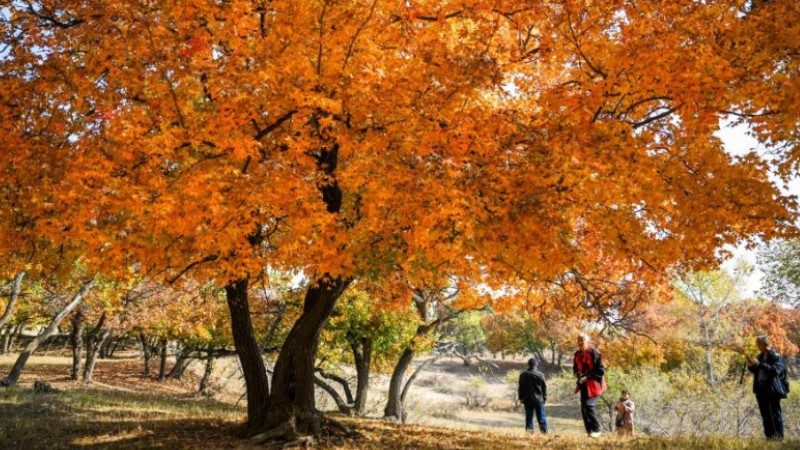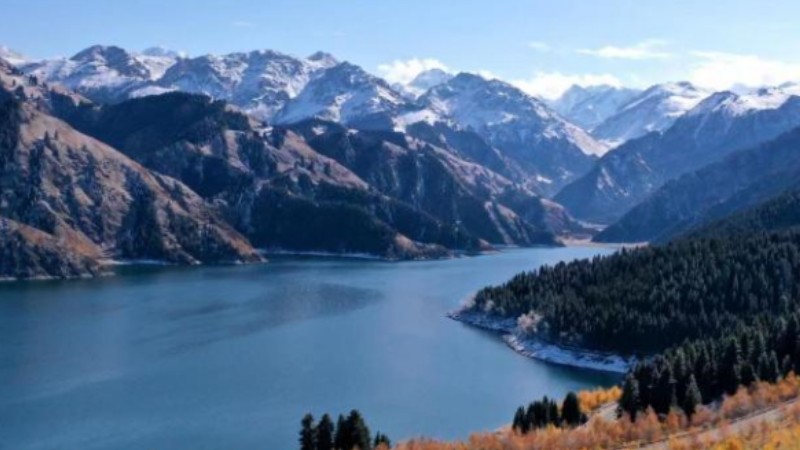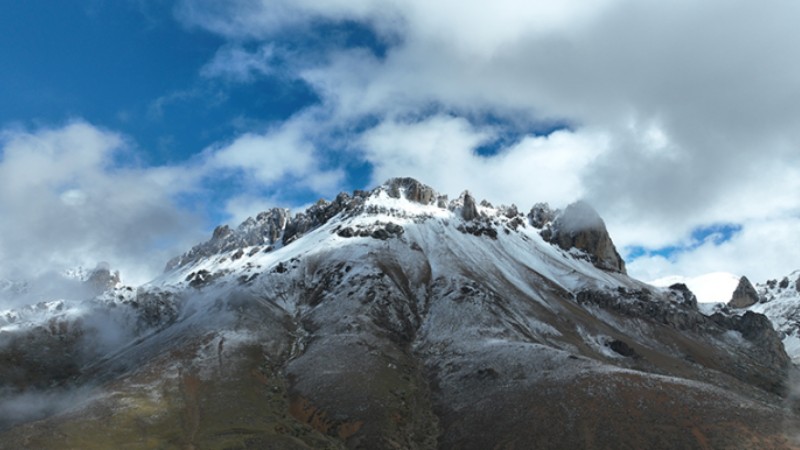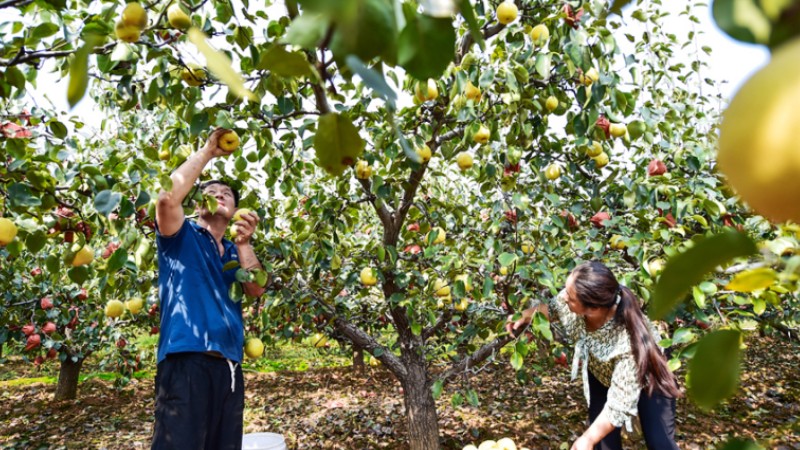Xizang’s largest lake sees achievements in ecologic, environmental protection
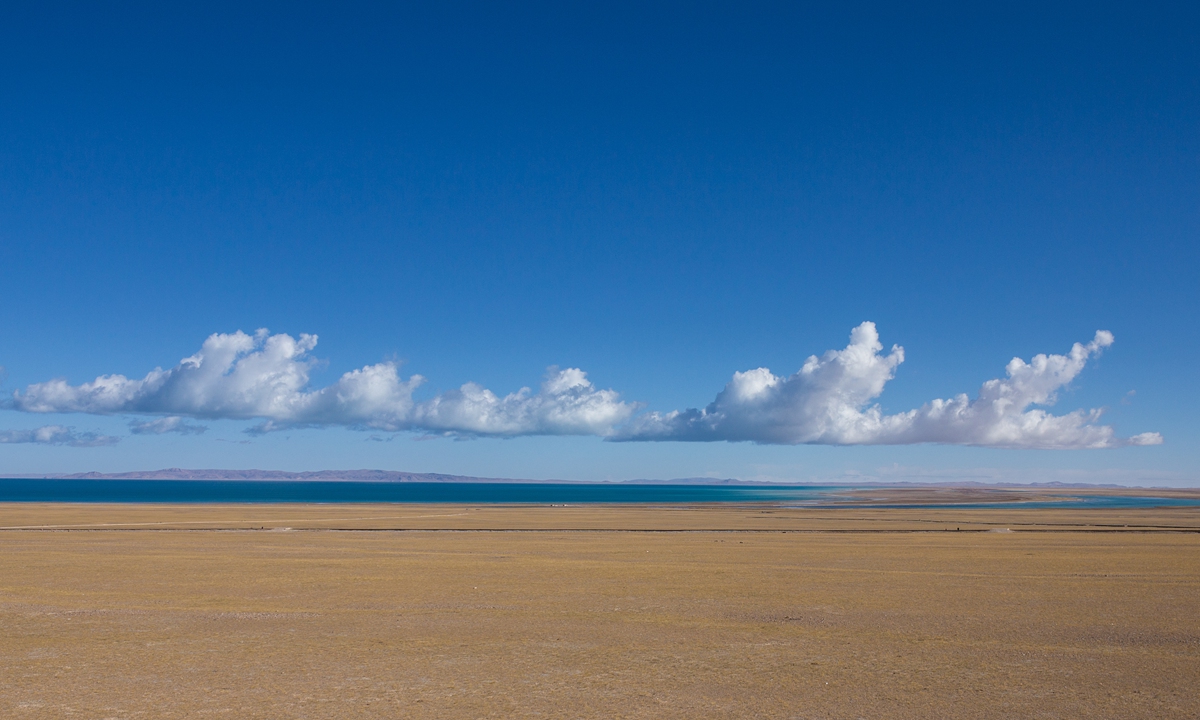
The Scenery of Siling Lake Photo: Shan Jie/GT
Siling Lake, the largest lake in Southwest China's Xizang Autonomous Region, has seen an improvement and achievements in environmental protection after decades of efforts from local people and the government.
The lake, which is also the second-largest saline lake in China, is situated at the juncture of Xainza, Baingoin, and Shuanghu counties in Xizang. It lies at an altitude of 4,530 meters above sea level and is a tectonic lake formed during the Qinghai-Xizang Plateau's geological development.
When the Global Times reporter arrived near the lake on Saturday, Tibetan antelopes and Tibetan wild asses could be frequently seen along the roadside, while raptors soared in the sky. The vast expanse of the lake, with its surrounding golden grasslands and distant snowy peaks, formed a picturesque view.
Siling Lake was designated as a regional-level nature reserve in Xizang in 1993, elevated to a national-level nature reserve in June 2003, and included in the list of Wetlands of International Importance in 2018.
In recent years, the water surface area of Siling Lake has continued to expand, reaching 2,391 square kilometers, surpassing the previous largest lake in Xizang, Namtso Lake, to become the largest lake in the region. This expansion is possibly linked to climate change, the Global Times learned from local officials.
The Siling Lake Nature Reserve holds national importance for the conservation of wildlife and high-altitude wetlands. It plays a crucial role in researching the natural ecological changes and biodiversity in the region. The reserve is home to various wildlife species, many of which are unique to the Qinghai-Xizang Plateau. Notable among these species are Tibetan antelopes, Tibetan wild asses, Tibetan gazelles, snow leopards, lynx, wolves, black-necked cranes and bar-headed geese.
The Tibetan antelopes in the vicinity of the lake are unique since they do not migrate and therefore can be observed around the lake throughout the year.
Tarchin, a wildlife conservation patroller from Xainza county, has worked in this role for 14 years. He mentioned that there are a total of 42 wildlife conservation patrollers in the county, most of whom are herders and receive some subsidies each month.
Their busiest period is during the migration of birds in June and July. Tarchin explained. "Our main task is to patrol and check if any wild bird has died, particularly due to incidents like avian influenza. We use motorcycles or cars, and fortunately, the roads are accessible, allowing us to complete a patrol in about half a day."
According to Tarchin, local herders have a strong commitment to wildlife protection, and during his 14 years on the job, there have been no incidents of poaching.
In addition to birds and Tibetan antelopes, snow leopards are also a prominent species in the area. Palbar Tashi, the head of the Siling Lake Nature Reserve, told the Global Times that infrared monitoring has identified approximately 500 snow leopards currently inhabiting the reserve.
"The presence of snow leopards indicates the health of the ecosystem here because it also signifies a stable population of their prey, such as bharals," he said.
Tarchin shared his experience rescuing a snow leopard.
"It entered a village, consumed over a dozen sheep belonging to herders, and then, perhaps after overeating, it became lethargic and refused to leave the sheepfold."
Tarchin displayed scars on his hand from being bitten by the snow leopard.
"We captured it and released it back into the wild, and the herders received compensation for their losses from the local government."
Palbar Tashi explained that the reserve is now providing training to wildlife conservation officers in photography and new media technology to showcase the beauty of Siling Lake and the wildlife conservation efforts to a wider audience.
The Qiangtang Plateau, where Siling Lake sits, is an important region in China for its clusters of lakes. It is also one of the world's largest and highest plateaus of lake clusters. Altogether, there are more than 800 lakes, big or small, dotted here and there in the Qiangtang Grassland, making the region a beautiful vista on the plateau. The combined water surface of the lakes surpasses 25,000 square kilometers, according to the Xinhua News Agency.
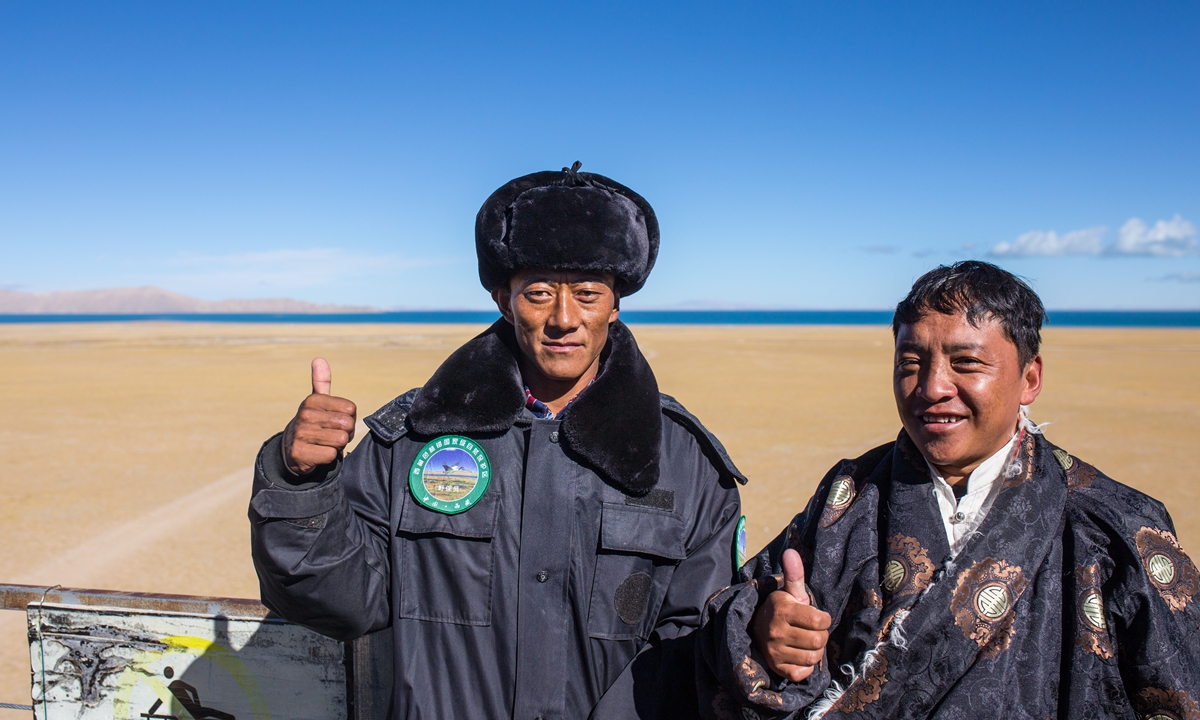
Wildlife conservation patrollers at Siling Lake Photo: Shan Jie/GT
Photos
Related Stories
- Openness, protection of Jokhang Temple in heart of Lhasa shows China's freedom of religion
- Representatives attend third China Xizang Trans-Himalaya Forum for Int'l Cooperation
- Victims of Mt. Shishapangma avalanches identified
- Tibet in the eyes of a foreign journalist: natural beauty, warm people
- West's lies about Xizang 'completely untenable': China's top diplomat
- Traditional Tibetan houses on mountain in Sichuan
Copyright © 2023 People's Daily Online. All Rights Reserved.






